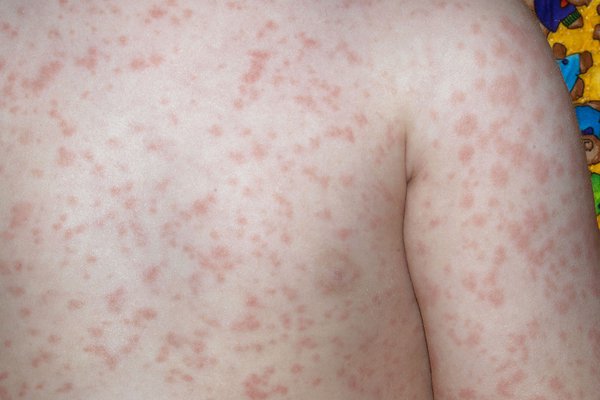Welcome to Your Cheerful Guide to Slap Cheek Treatment for Kids!
Hey there, super parents! ? Is your little one showing signs of a bright red cheek and feeling under the weather? It might just be slap cheek—also known as fifth disease. But don’t you worry, because we’re here to guide you through everything you need to know about slap cheek treatment and how to get your bundle of joy back to their happy, playful self!
What is Slap Cheek?
Firstly, let’s understand our opponent. Slap cheek is a common childhood illness caused by the human parvovirus B19. Characterized by a distinctive red rash on the cheeks (hence the nickname), it’s a mild yet contagious viral infection that mostly affects children between the ages of 4 and 10.
Recognizing the Symptoms
Before we jump to treatment strategies, it’s crucial to spot the symptoms of slap cheek in your kiddo. The primary sign is the namesake “slapped cheek” appearance. Your child may also experience a slightly raised temperature, a sore throat, and some discomfort. After a few days, the rash may spread to their body, arms, and legs, but it’s usually less bright when it moves away from the face. While the rash is the most visible sign, your child might have been infectious even before it appeared – surprise!
What to Do If You Suspect Your Child Has Slap Cheek
- Consult with a Healthcare Professional: If you think your little explorer has slap cheek, it’s always best to touch base with your doctor for a proper diagnosis. They know this stuff like the back of their hand!
- Stay at Home: This infection is contagious, especially before the rash makes its grand entrance. To keep friends and classmates safe, it’s a good idea to let your child rest at home.
- Keep Up the Fluids: Encourage your child to drink plenty of fluids. Staying hydrated is like giving your child’s immune system a secret weapon.
- Comfort and Care: Sometimes the rash can be itchy. A cool compress or calamine lotion can work wonders here and provide some much-needed relief.
Slap Cheek Treatment Solutions
When it comes to treatment, patience is key, as slap cheek typically clears up on its own. The main goal is to provide comfort to your child while their innate superpowers (a.k.a. their immune system) fight off the virus. But let’s dive into a few slap cheek treatments that can help ease their symptoms and make the healing process smoother for everyone!
Over-the-Counter (OTC) Medications
For those fevers or achy moments, OTC pain relievers like acetaminophen or ibuprofen can be helpful. Remember to follow the recommended dosages and consider age restrictions. But be sure to avoid aspirin for children and teens, as it’s associated with a rare but serious illness called Reye syndrome.
And now, let’s arm you with some additional tips and tricks to comfort your child while dealing with slap cheek symptoms. Stay tuned because we’re just getting started with making sure your little superhero feels better in no time!
Hang in there, parents! Together, we’ll ensure your child’s smile is as bright and healthy as ever. Plus, with a little love and care, this too shall pass! ?

5 Essential Tips for Parents Preparing for Slap Cheek Treatment
Understand the Course of the Infection
Knowing the stages of slap cheek can help you manage expectations and better understand how the virus progresses. Initially, your child may show flu-like symptoms, such as a headache, fatigue, or a mild fever. The famous red rash typically appears after these initial symptoms and can come and go for up to three weeks. Keep in mind that once the rash is visible, your child is likely not contagious anymore.
Prevent the Spread
Although contagious in the early stages, the spread can be minimized with good hygiene practices. Teach your child to cover their mouth and nose when coughing or sneezing and to wash their hands regularly. Inform their school or daycare so appropriate measures can be taken to protect other children.
Comfort Is Key
Your child may feel irritable due to the itchiness and discomfort caused by the rash. Dress them in loose, soft clothing, and keep the environment cool to minimize itching. Offer lots of cuddles, and don’t underestimate the power of distraction—favorite movies, stories, or activities can be a great help.
Watch for Complications
Keep an eye out for any signs of complications, such as intense itching that leads to skin infections, joint swelling or pain, or an unusually high fever. While rare, slap cheek can be more severe in some cases, especially if your child has an underlying health condition, like sickle cell disease or a compromised immune system.
Plan for a Healthy Return
Once your child is feeling better and ready to return to school or daycare, make sure they’re well-rested and symptom-free. Re-establishing a routine can help them adjust back to their regular activities. Ensure they continue good hygiene practices to maintain their health and to protect others.
Extra Loving Care for a Speedy Recovery
Managing slap cheek is largely about supportive care and providing your child with lots of tender loving care. Keep the atmosphere positive and reassure your child that they’ll be back to their normal, energetic selves before they know it. With your attentive care, the slap cheek virus will be history, and those rosy cheeks will just be a sign of all the fun and play to come!
Remember, super parents, this guide is here to support you through your child’s recovery from slap cheek. While it’s common and mostly mild, your attentive care and understanding of the treatment and comfort measures can make a huge difference. So keep up the great work, and here’s to quick recoveries and endless smiles ahead!
See more great Things to Do with Kids in New Zealand here. For more information see here
Disclaimer
The articles available via our website provide general information only and we strongly urge readers to exercise caution and conduct their own thorough research and fact-checking. The information presented should not be taken as absolute truth, and, to the maximum extent permitted by law, we will not be held liable for any inaccuracies or errors in the content. It is essential for individuals to independently verify and validate the information before making any decisions or taking any actions based on the articles.




